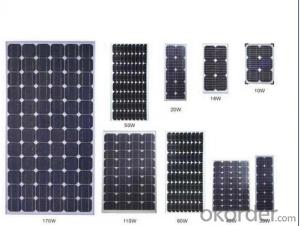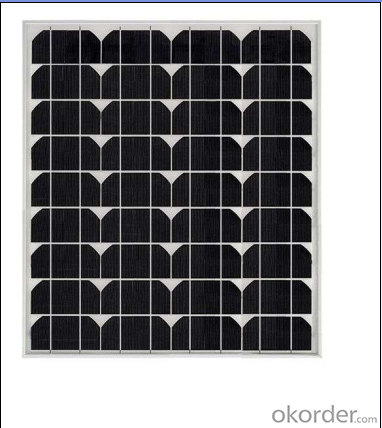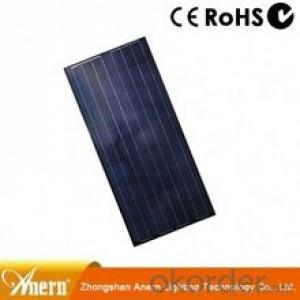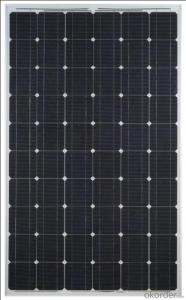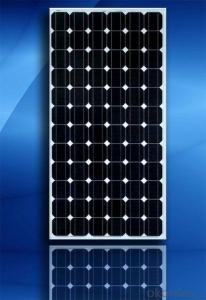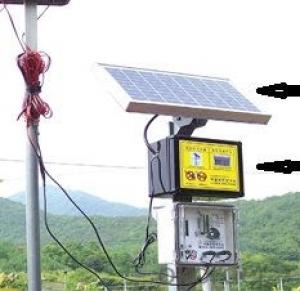Rec Solar Cells Monocrystalline Solar Cell Price with 25 Year Warranty CNBM
- Loading Port:
- Qingdao
- Payment Terms:
- TT OR LC
- Min Order Qty:
- 10 pc
- Supply Capability:
- 300000 pc/month
OKorder Service Pledge
OKorder Financial Service
You Might Also Like
Quick Details
| Place of Origin: | China (Mainland) | Brand Name: | cnbm | Model Number: | PS-M672300 |
| Material: | Monocrystalline Silicon | Size: | 1956*990*40mm | Number of Cells: | 72 pieces |
| Max. Power: | 300W | Weight: | 23kg monocrystalline solar panel | Product warranty: | 25 years |
| Maximum system voltage: | 1000VDC | Tolerance: | 0/+3% | Cable length: | 1.2m |
| Connector: | MC4 compatible connector | Junction box: | IP65 Rated | Frame: | Anodized aluminium alloy |
| Front Cover: | 3.2mm thick.low iron tempered glass | Cell type: | Monocrystalline solar panel cells 156mm |
Packaging & Delivery
| Packaging Detail: | Monocrystalline solar panel packing information 28pcs. / box 20pcs. / pallet 560 pcs. / 40ft 602 pcs. / 40ft (H) |
| Delivery Detail: | in one week |
Specifications
1. Best monocrystalline solar cell price
2. 300W Monocrystalline solar panel with best price
3. 25 years warranty
Product Name
High Efficiency monocrystalline solar cell price with 25 year warranty
Product Description
1.Solar Panel Descprition
PS-M672 Series solar panel is connected in series by 70 pieces of 156mm×156mm Mono Crystalline silicon cells. Solar panel performance is produced according to IEC61215, IEC61730 international standard.
2.Solar Panel Characteristics
1)Manufactured according to international quality and Environment Management
System (ISO9001, ISO14001)
2)High efficiency crystalline silicon solar cells
3)High transmission Iow iron tempered glass, strong mechanical resistance
4)Anti-ageing EVA and excellent anti-climate back sheet
5)Anodized aluminum frame improves load resistance capabilities for heavy wind loads.
6)Standard waterproof junction box
7)High endurance to different weather
8)Good and friendly package with less transportation and storage space.
3.Solar Panel Warranty
1)10 years limited manufacturing warranty
2)10 years for 90% of warranted minimum power
3)25 years for 80% of warranted minimum power
4.Solar Panel Electric Characteristics
| Cell Type | Mono Solar Cell 156mm*156mm | |||
| Item | PS-M672285 | PS-M672290 | PS-M672295 | PS-M672300 |
| Power | 285W | 290W | 295W | 300W |
| Voc(V) | 44.8 | 45 | 45.3 | 345.5 |
| Isc(I) | 8.6 | 8.75 | 8.85 | 8.95 |
| Vm(V) | 36.2 | 36.3 | 36.5 | 36.6 |
| Im(I) | 7.87 | 7.99 | 8.08 | 8.20 |
| Cell Efficiency | 17.08 | 17.38 | 17.68 | 17.98 |
| Module Efficiency | 14.72 | 14.98 | 15.23 | 15.49 |
| Fuse | 15A | |||
| Max System Voltage | 1000VDC | |||
| Cell Number | 72cells | |||
| Tolerance | 0/+3% | |||
| Module Size | 1956*990*40(mm) | |||
| Weight | 23KGS | |||
| Cable Length | 0.9m | |||
| Connector | MC4 or compatible connector | |||

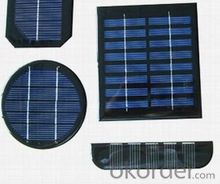
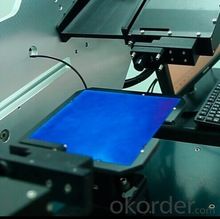
- Q: Monocrystalline silicon and polycrystalline silicon cell in the appearance of what is the difference?
- From the appearance point of view: monocrystalline silicon cell four corners were arc-shaped, no surface pattern; polysilicon cell four corners for the square angle, the surface has a similar pattern of ice flowers.
- Q: Many people said the usage of solar cell can reduce the cost overall, but does anyone agree with me that it actually cost a lot to operate a solar cell system?
- It cost less in terms of the energy waste.
- Q: Where can I find more information about the work process of solar cells
- From your teachers at school.
- Q: Want to use solar panels and batteries to produce a power supply that can provide a stable voltage, how can you connect? Can you connect directly with the solar panel to the battery while the battery power supply is feasible?
- In the case of solar power to charge the battery at the same time, the battery power supply is completely feasible, in this case, the load will use the power of electricity directly to the use of solar cells, the remaining charge to the battery; the contrary, if the solar battery power is not enough , Will also take electricity from the battery at the same time.
- Q: What is the impact of solar cells on reducing air pollution from power generation?
- Solar cells have a significant impact on reducing air pollution from power generation. By harnessing the sun's energy to produce electricity, solar cells generate clean and renewable power without emitting pollutants such as greenhouse gases, particulate matter, and toxic chemicals. This shift towards solar energy helps decrease the reliance on fossil fuel-based power plants, which are major contributors to air pollution and climate change. As solar cells continue to become more efficient and affordable, their adoption can play a crucial role in improving air quality and mitigating the harmful effects of power generation on the environment.
- Q: Can solar cells be used to power remote disaster response systems?
- Yes, solar cells can be used to power remote disaster response systems. Solar cells, also known as photovoltaic cells, convert sunlight into electricity, providing a reliable and renewable energy source. Since disaster response systems often operate in remote or inaccessible areas, solar power is an ideal solution as it eliminates the need for traditional electrical infrastructure. Solar panels can be installed on rooftops, portable units, or even integrated into the design of disaster response equipment, ensuring continuous power supply for communication devices, lighting, medical equipment, and other critical systems during disaster relief operations.
- Q: How do solar cells handle snow or ice accumulation?
- Solar cells can handle snow or ice accumulation by either melting the snow or ice due to their ability to absorb sunlight and convert it into electricity, or by allowing the snow or ice to slide off the surface due to their smooth and slippery design. Additionally, some solar panels are tilted at an angle, which helps prevent snow or ice buildup by allowing it to slide off more easily.
- Q: How is the solar cells factories working in China? Do they follow certain quality standards?
- The solar cells factories are pretty good, at least based on my personal experience. I went to visit one of the solar cell factory based in Shandong province, and they are quite professional.
- Q: Can solar cells be used in museums?
- Yes, solar cells can be used in museums. They can be used to power various devices and lighting within the museum, reducing reliance on traditional energy sources and contributing to a more sustainable and environmentally friendly operation. Additionally, solar cells can be integrated into the design of museum buildings, providing a visually appealing and efficient way to generate renewable energy.
- Q: How does a solar cell work?
- A solar cell works by converting sunlight into electricity through the photovoltaic effect. It consists of a thin semiconductor material, usually silicon, which absorbs photons from sunlight. When the photons strike the semiconductor material, they transfer their energy to the electrons in the material, causing them to become excited and move freely. This creates a flow of electrons, known as an electric current. The solar cell contains two layers, one with excess electrons (n-type) and the other with a deficiency of electrons (p-type), creating an electric field. As the excited electrons move towards the p-n junction, the electric field forces them to move in one direction, resulting in a usable electric current. This current can be harnessed and used to power various devices or stored in batteries for later use.
Send your message to us
Rec Solar Cells Monocrystalline Solar Cell Price with 25 Year Warranty CNBM
- Loading Port:
- Qingdao
- Payment Terms:
- TT OR LC
- Min Order Qty:
- 10 pc
- Supply Capability:
- 300000 pc/month
OKorder Service Pledge
OKorder Financial Service
Similar products
Hot products
Hot Searches
Related keywords
